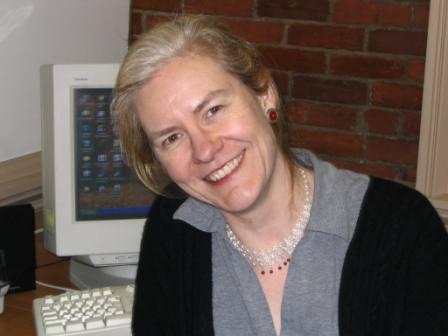 Medieval church, with tower and Baroque facade
Medieval church, with tower and Baroque facadefrom Sarah's notebook - January 2, 2009
Switzerland for Christmas – almost like a stretch in the US, only everyone speaks French: supermarkets, SUVs, malls. The huge supermarkets gleaming with products. I came home with oatmeal, peanut butter, crackers… maple syrup, even! An entire wall of yogurt. Ellen told us she couldn’t park illegally even for a minute, or she’d get a ticket. That’s Europe, she said. Not Italy, we answered, where cars cram into every available spot, even corners, blocking pedestrians – you have to walk detours around them or wedge yourself through, if you can.
I miss Rome, horribly. My niece Anouk gave us a calendar for Christmas she made with photos from her October visit. The photo for January is a view from our roof at night. It’s a bit fuzzy and distorted, giving it an impressionistic air, all the more charming. I sit and stare at it, here in foggy, freezing Torino.
How to describe it? No way. I’ll just spend my life trying to get back there. How – when it all seems a cliché? Even though it’s not, people really live there and live their crazy lives there, as they have for thousands of years. The lemons hang ripening over the high walls of the convent along one of Rome’s oldest streets: Clivo di Scauro. Follow it under the Arco di Dolabella (my guidebook says, built in 10 BC) to the church of Santi Giovanni i Paulo, wealthy brothers, converts to Christianity, who were martyred after they gave away their possessions to the poor. Rising above the massive tufa blocks of a Roman temple is one of Rome’s characteristic medieval bellow towers: seven stories of brick, with colored glass disks embedded here and there. At each level, a narrow pair of Romanesque arches. Beside the tower a Baroque façade to the 4th century church inside. And below it all, an excavated Roman street, complete with houses, shops, and temples.
Back on the street you pass under several narrow brick archways. You’re walking on Roman paving stones now, diamond shaped and worked by feet and carts and cars for centuries. In the rain they can be slippery, treacherous. Still headed downhill, off the rise of Celimontana, the street arrives at another small open area, filled with flowering bushes and green. In the center, a grassy island contains a bust of Mother Teresa and over the weeks you see nuns from all over the world in her distinctive white habit, trimmed in blue – here are the Roman headquarters of her order.
Olive trees line the road now – one day a woman is picking them into a normal 21st century plastic bag. Through the trees you spot the southern end of the Palatine Hill, the posh district of ancient Rome, across a busy avenue below. Another church rises up a lovely flight of stairs on your left. It has a portico and courtyard you can glimpse from the street. There’s more traffic here than on the Clivo di Scauro above – though still not much by Roman standards – and you have to be careful, hug the edge of the street, as there are naturally no sidewalks.
Cutting down a grassy slope brings you out at an unidentified triumphal arch, fenced off, which gathers trash week by week, until one day you pass and spot that it’s been cleaned out, only to begin gathering its plastic bottles and discarded slippers anew. You’ve emerged now from your idyll to one of Rome’s most massive and chaotic intersections: two huge avenues, eight or more lanes of traffic. Two crosswalks get you 2/3rds of the way across, but the last requires a dash through Rome’s famous traffic; somehow the planners have stranded pedestrians midway.
But the Circo Massimo is to your right – site of chariot races and source of our word, circus – the western side of the Palatine rises above it: here is the emperor’s palace, where he could watch the races without leaving home. Arches, ruins, but still visible the outlines of this excess and wealth.
 FAO to the left and Circo Massimo in front, from the Palatine Hill
FAO to the left and Circo Massimo in front, from the Palatine HillDirectly in front of you, the 1970s excrescence of the UN’s Food & Agriculture Organization, where Tom worked for three and a half month and where Ben and I are heading for our Italian class, to use the free internet, to rent DVDs and books from the staff coop library, to visit the travel agency, to have lunch with Tom on the rooftop terrace with views across the city taking in all we’ve just walked through, plus the Terme di Caracalla, the public baths, to the south, the Colloseum, bell towers, church domes, including, across the city, the dome of St. Peter’s, and in the center of it all, disparaged by Romans and tourists alike, the Vittoriana, the Typewriter, the Wedding Cake, which celebrates the glorious 1870 unification of Italy. Rome.

No comments:
Post a Comment